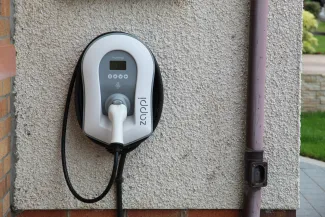
It is becoming increasingly common for retail parks to have electric vehicle charging points installed in their customer car parks.
From a landlord's perspective, it is a great way to generate additional income from their property as well as potentially encouraging use of the car park and driving footfall.
However, there can be some potential pitfalls for a landlord in letting to any electrical vehicle (EV) charging operator.
Here we explore some of the potential factors for a landlord to bear in mind:
1. Are you able to let out the relevant parts of the car park?
The car park will, generally speaking, form part of the “common parts” for use by other tenants on any shopping centre or retail park.
While there is unlikely to be any express prohibition on a lease to an EV charging operator, the lease might contain a prohibition on removing areas from the common parts, in which case leases may need to be amended before the areas can be let (which will require consent of the other tenants).
If variations were required, the impact on timing for the letting will need to be factored in, as well as the costs of obtaining variations of relevant leases (and who will meet those costs).
Even if altering the common parts is permitted, there may still be restrictions. For instance, certain areas might be designated for specific tenants or there may be provisions in place to ensure that any alterations to the common parts don't have a material adverse effect on other tenants.
In addition, there could be “no build zones” such that dedicated areas are to be kept clear of buildings or any other erections, or provisions that visibility over certain areas is not to be restricted).
From a landlord's perspective, early consideration of these issues and engagement with tenants is key.
While tenants may welcome the introduction of charging points, it’s important to determine if any have objections, and if so, how these can be addressed.
2. What rights will be granted to the operator?
EV charging operators are likely to require more rights than simply placing their charging stations in the relevant parking spaces.
They will need to pass cables through other parts of the development, and may require a dedicated substation to provide power to their charging points. They will also need rights of access to carry out the installation works, as well as for any ongoing maintenance and repair.
These are relatively standard rights on the face of it, but it’s worth bearing in mind that substations or routes for other services are likely to be located in the rear of a development or in a service yard or similar – whereas for electric vehicles they will be in the customer car park.
Installation and other works are therefore likely to be more disruptive than they may otherwise be, and thought will need to be given on how to mitigate the impact on other tenants and the public.
When selecting a substation location (if required for the EV charging points), it is important to consider the practicalities around the location, cable routes and the need for further consent if cables must cross third-party or separately let property.
3. How will the landlords’ income be calculated?
While rent can simply be a fixed annual sum, it could also be that rent is calculated based on the use of the charging points.
This could be calculated as a proportion of the operator’s net or gross turnover from the charging points, or as a sum per charge at the charging stations at the property.
4. Are any other consents required?
It is important to consider if additional consents are required for the grid connection or planning permission for the charging points themselves.
If these are required, thought needs to be given to the timing and cost implications to the project, and also what obligations there are on all parties with regards to obtaining such consents.
The landlord will also need to consider what rights they have to approve any applications for such consent where applications are being submitted by the operator, as well as sign off on the form of consent once issued.
If you would like further information on the issues covered in this article, please contact a member of our development team.